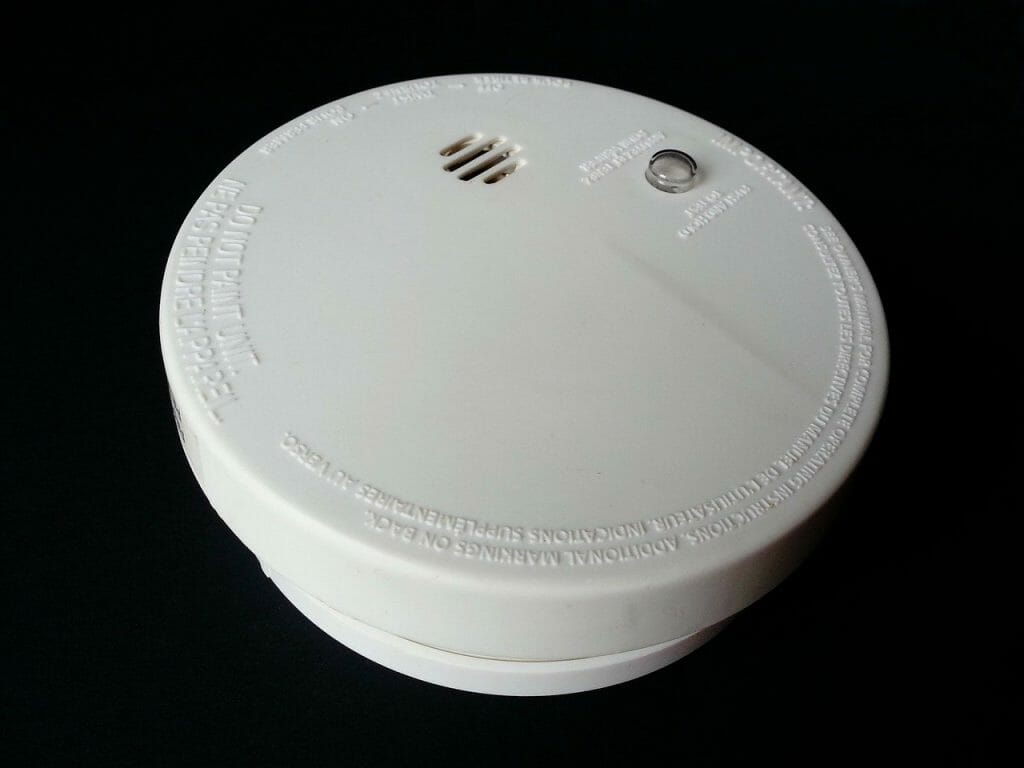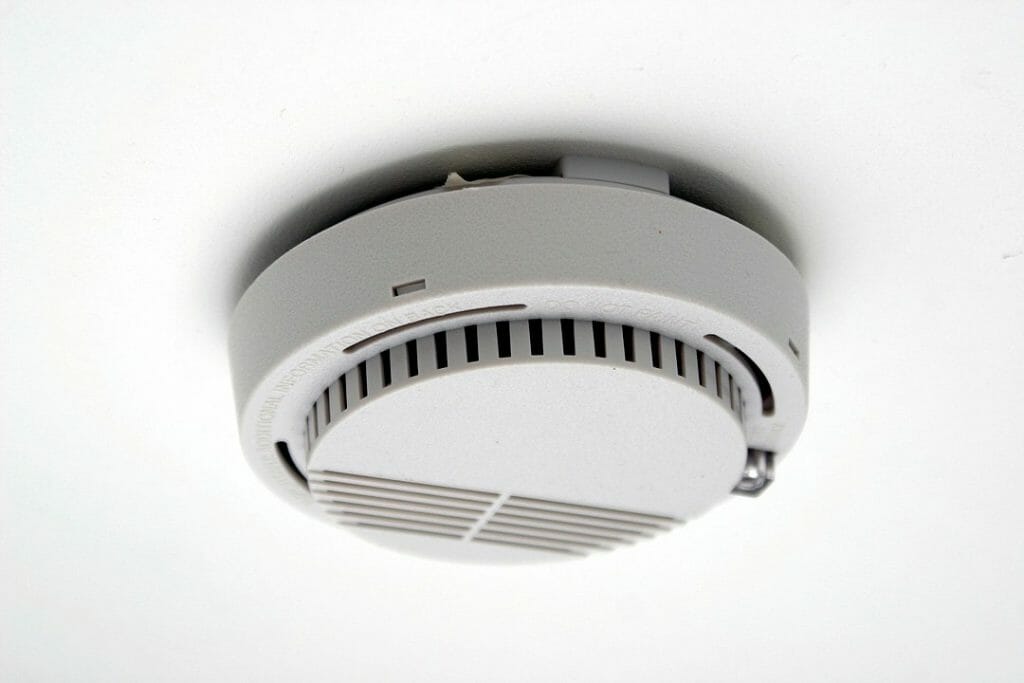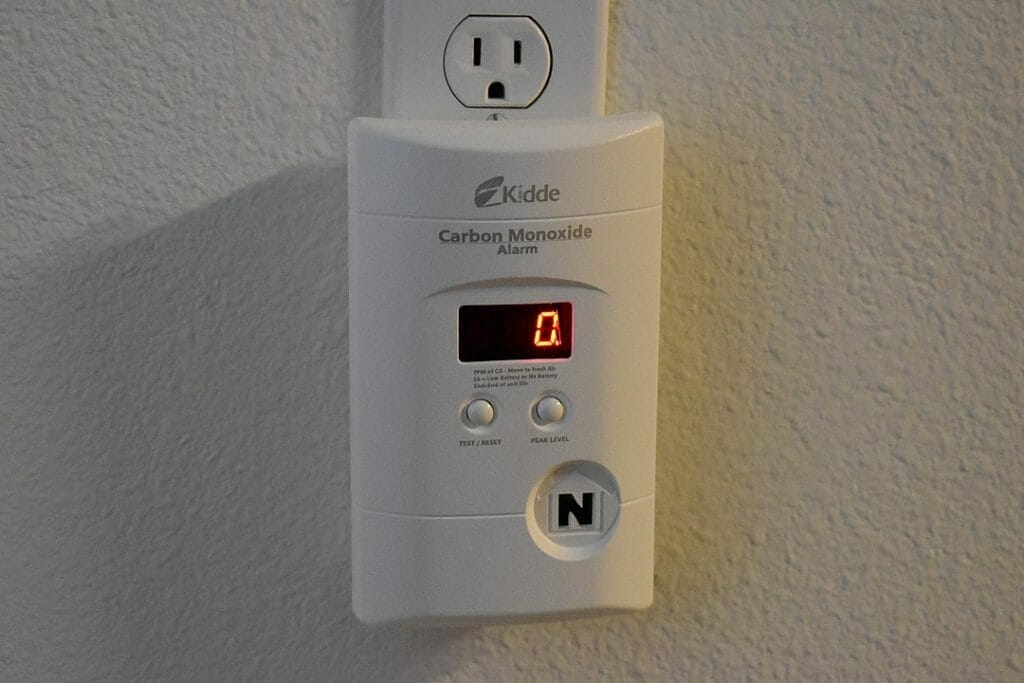Quick Navigation
- How Many Smoke Alarms Do I Need Exactly?
- Smoke Detector Standards – How Many Smoke Detectors Do I need By State
- Where Are Smoke Detectors Required in a Home?
- Which Type of Smoke Detector to Install in Your Home
- Maintaining Your Smoke Detectors
- Difference Between Smoke Detectors & Carbon Monoxide Alarms
- Purchasing Smoke Detectors
- Planning and Implementing a Successful Smoke Detector Installation
According to the National Fire Protection Association, the two most common reasons for fires are heating equipment and cooking equipment being set ablaze. A smoke alarm can help detect these fires before they start.
All states require 1 smoke detector in each bedroom, level, and corridor next to living spaces. The total number of smoke alarms you need depends on your building size and square footage, the number of floors in your building, and the number of bedrooms.
A small house with a detector in every small room and a couple of large ones may need 7 smoke detectors for example. It’s important to know that there are two types of high-risk areas: those with lots of people present, like homes, office buildings, hotels, and dormitories; and those with highly combustible contents, like libraries.
In both cases, smoke detectors are required by law. Here we will go into detail on everything you need to know.

How Many Smoke Alarms Do I Need Exactly?
Though we covered a general guideline for how many you need there are some slight nuanced by state. Different organizations provide different guidelines on how many smoke alarms you should have for optimal safety, so it is best to refer to their suggestions before making any final decisions. Below we have provided a chart of some of the nuances between states and what you should know.
Smoke Detector Standards – How Many Smoke Detectors Do I need By State
Fire Code Requirements Based on State with Links
| State | How many detectors need per sq ft | Notes | Link |
| California | 1 on each level including basement, 1 in each bedroom, 1 in the hallway outside bedrooms | Battery powered smoke alarms must have a 10 year sealed battery | Click Here |
| New York | 1 on each level including basement, 1 in each bedroom being slept in, 1 in the outside common area | Must be powered by a 10-year sealed battery or hardwired | Click Link 1 Click Link 2 |
| Florida | 1 on each level including basement, 1 in each bedroom, 1 outside each sleeping area | Must be a 10 year non-removable battery smoke detector | Click Link 1 Click Link 2 |
| Ohio | Atleast 1 in each bedroom, floor and corridor | New dwellings must hold smoke alarms using both photoelectric and ionization systems | Click Here |
| Arizona | Atleast 1 in each bedroom, floor and corridor | 10 year sealed battery smoke alarms required | Click Here |
| Georgia | Atleast 1 in each bedroom, floor and corridor | 10 year sealed battery smoke alarms required | Click Here |
| Iowa | Atleast 1 in each bedroom, floor and corridor | Must be a Dual-sensored alarm | Click Here |
| Maine | Atleast 1 in each bedroom, floor and corridor | 10 year sealed battery smoke alarms required | Click Here |
| Louisiana | Atleast 1 in each bedroom, floor and corridor | All one or two family dwellings must include 10 year sealed battery smoke alarms | Click Here |
| Maryland | Atleast 1 in each bedroom, floor and corridor | 10 year sealed battery smoke alarms required | Click Here |
| North Carolina | Atleast 1 in each bedroom, floor and corridor | All newly installed smoke detectors must be a tamper-resistant, 10 year lithium battery-operated alarm unless the dwelling unit is already equipped with a hardwired alarm along with a battery backup | Click Here |
If your state isn’t on here, it means that it has the standard laws that require 1 smoke detector in every bedroom and level of your home. Individual localities may have specific laws, so watch out for that.
Where Are Smoke Detectors Required in a Home?
There are a few places where you should install a smoke detector:
- On each level of your home
- In each bedroom, especially if it has a closed-door
- In any room with an attached bathroom or without natural light
- Near any gas appliances or water heaters (Considering installing a detector right above appliances such as a stove will trigger many false alarms, try to install them on the other side of the room)
- In any room where you have a fireplace or woodstove (Like gas appliances, try not to place a detector right above an open fireplace or woodstove to avoid many false alarms)
Which Type of Smoke Detector to Install in Your Home

There are two types of smoke detectors, ionization and photoelectric.
Ionization smoke detectors need a low level of alpha particles to trigger the alarm. If the air is clear, then they may not go off.
Photoelectric smoke detectors use beams of light to detect tiny particles of smoke that can be more sensitive to conditions like smog. There are some smoke detectors that utilize both approaches.
Combination alarms use the best of both ionization and photoelectric methods which provide superior protection against smoke. These are definitely the ideal type of smoke detectors to purchase, yet they can be more expensive.
Maintaining Your Smoke Detectors
Smoke detectors can save your life. It’s important to change the batteries and clean them regularly to make sure they work properly.
When it comes to smoke detectors, you should keep two things in mind: the type of battery and the type of unit.
Different types of smoke detectors use different kinds of batteries, so make sure you have a new one on hand before you go changing out the old one.
And different units need to be cleaned differently, so don’t forget that!
Most batteries should be replaced twice a year (or every 6 months).
A neat way most people remember to change their smoke alarm batteries is by changing them at the beginning and end of daylight savings time.
Along with batteries, don’t forget to replace the alarm itself every 10 years when the sensors begin to lose the sensitivity that made them effective.
Some alarms come with a 10 year sealed battery eliminating the need to test and replace batteries for a decade.
With 10 year sealed battery alarms, you will only need to replace the alarm itself every decade!
Difference Between Smoke Detectors & Carbon Monoxide Alarms

Fires are the most common cause of home accidents in the US and carbon monoxide poisoning is one of the leading causes of death in fires. To prevent these kinds of accidents, it is important to have a smoke detector and an additional carbon monoxide alarm. (1)
Smoke detectors are designed to detect smoke from fires. They usually use an ionization sensor or photoelectric sensor (or both), which works by detecting particles of light emitted during smoke combustion. Carbon monoxide alarms use a highly sensitive gas sensor that can detect small, invisible amounts of carbon monoxide from fireplaces, space heaters, and other gas-powered appliances in your home that emit carbon monoxide (CO) along with carbon dioxide (CO2) when they operate. (2)
Smoke detectors and carbon monoxide alarms are both crucial for preventing fires and protecting you from harm.
Purchasing Smoke Detectors
Smoke detectors are generally very cheap price-wise, usually $10-$20 each. They also come in packs of 4-6 detectors making a very convenient buy for the consumer.
10-year sealed battery smoke detectors are considerably more expensive than standard versions, costing upwards of $70.
Planning and Implementing a Successful Smoke Detector Installation
The first step to installing a smoke detector is finding the perfect location for it.
You want to try and find a spot that will not be in the way of anything, but also as high up as possible.
The second step to installing a smoke detector is figuring out what type of smoke detector you need. There are different kinds of detectors with different features so make sure you get one that will work best for your home and needs.
After finding the perfect spot, it’s time to install the unit itself, which can be done by using mounting brackets or screws and nails.
References:
(1) carbon monoxide – https://www.nhs.uk/conditions/carbon-monoxide-poisoning/
(2) carbon dioxide – https://www.britannica.com/science/carbon-dioxide

